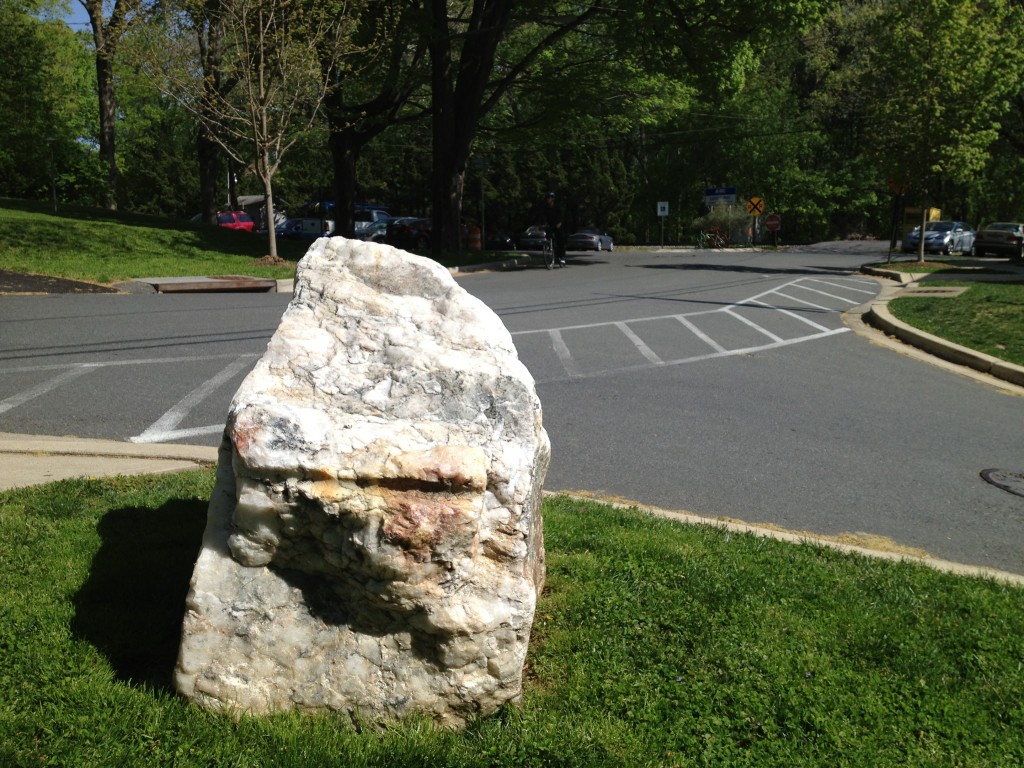
By Dan Reed of Just Up The Pike (as seen in Friends of White Flint)
With recent news of the Metro board of directors voting to approve changing the name of the White Flint Metro Station to North Bethesda, we wanted to share Dan Reed’s 2013 article highlighting how White Flint got its name.
Some call it White Flint, while others call it North Bethesda. One hundred years ago, they called it Windham. The White Flint Partnership, a coalition of area landowners seeking to transform Rockville Pike from a suburban strip into an urban downtown, are working on a branding scheme for the area. However, developers and residents alike disagree on whether to call it White Flint, North Bethesda, or something else. So where did these names come from, anyway?
In the early 20th century, Rockville Pike was a rural highwayand the area between today’s Rockville Town Center and Bethesda was rolling countryside, dotted with small villages. After Rockville, the biggest nearby towns were Kensington and Garrett Park. Annual maps from the United States Geological Surveyshow three tiny settlements in what’s now the White Flint Sector Plan area, each containing just a few houses. There was Montrose, located near the intersection of Montrose Road and Old Georgetown Road; Randolph, on Randolph Road near what today is Loehmann’s Plaza Shopping Center; and Windham, near the current intersection of Parklawn Drive and Boiling Brook Parkway.
Some of these place names persisted for decades, appearing on USGS maps as late as the 1970’s. However, others were more short-lived. Autrey Park, located near Rockville Pike and Edmonston Road, was wiped away after Rockville annexed it. Beane, a village at Old Georgetown Road and Grosvenor Lane, was renamed Mount Zion Church after its main landmark, before disappearing altogether after World War II. Windham’s last appearance on the USGS map was in 1923.
Seven years later, the White Flint Country Club opened on Rockville Pike near Nicholson Lane. That’s the first known use of the name, according to Clare Lise Kelly, research and designation coordinator for historic preservation at the Montgomery County Planning Department. The name was a reference to the white quartz rocks which can be found throughout Montgomery County.
By the 1950’s, suburban development took off along Rockville Pike, and with it came new uses for “White Flint.” Homebuilders laying out new subdivisions around the mall made references to the country club, like White Flint Drive, which was built between 1957 and 1959. The adjacent White Flint Park, which once held many of its namesake rocks, opened in 1978. Meanwhile, family-owned developer Tower Companies bought the country club in the 1960’s, according to Arnold Kohn, a lawyer for the company. Tower partnered with Lerner Enterprises to build White Flint Mall, which opened in 1977.
North Bethesda came a little later. It’s named for Bethesda, which was named in 1871 after a church named for a Biblical healing pool in Jerusalem, which in turn got its name from the Aramaic word for “house of mercy.” However, the Postal Service only recognized North Bethesda as an official mailing address in the 1990’s, a distinction White Flint doesn’t have. Other than a few scattered around the White Flint Mall property, and one in front of the Garrett Park post office, you won’t see many white flint rocks in White Flint, but the name remains as it has for over 80 years. How long it’ll stick around is another story.

